Introduction: Rapid Everest Base Camp Trek (Heli return to Lukla from Gorakshep) 2025/2026
Rapid Everest Base Camp Trek is one of the best combo trekking journeys filled with high-flying thrills and an overland adventure. It is an ideal mix of exciting treks that take you on foot to Gorak Shep, Everest Base Camp, and Kala Pattar, followed by a leisurely helicopter flight from Gorek Shep to Lukla.
This extraordinary trek is best suited for trekkers who have limited time but want to explore the Everest Region and its surrounding area. Similarly, trekkers looking to experience Everest from both land and air can fulfill their long-awaited dreams.
From Gorak Shep, we take a short helicopter ride back to Lukla. This is one of the most scenic helicopter flights that passes through Kala Pattar and Mt Everest Base Camp. Trekking back from Gorek Shep to Lukla will take you about 3 days, but the scenic short flight will take about 10 minutes to reach Lukla.
Everest Base Camp Trek with helicopter return to Lukla is a journey. You have a few acclimatization days to give your body time to adjust to the altitude. You will be acclimatized to the Sherpa village called Namche Bazar and Dingboche. On these days, you hike up to a couple of hundred meters and back, which will rely on help to adjust to the altitude.
During your trekking journey, you will be greeted by splendid snow-covered mountains. This trek's natural beauty is amazing, as it comprises the world-famous Khumbu Icefall and Khumbu Glacier.
Besides that, the Khumbu Valley has diverse topography, exotic terrains, and an ever-changing climate. On Everest's trekking trail, you will also meet people from different ethnic groups. Their warmth and generosity, filled with kindness, will make you feel at home away from home.
The Everest Base Camp trekking trail goes past dense forest and a Sherpa village to the base camp. It is a quick trek, whereas others take a couple of days more.
This exciting whirlwind of an adventure takes you to the quaint atmosphere far off from the city sound here alongside spectacular views.
This is a wonderful package to have a faceoff with the Himalayas added with a helicopter ride back can join this trip. We guarantee you that, this will be one of the best experiences that you ever had while making it to the Everest Base Camp ever.
What does a rapid Everest base camp trek with heli return mean?
Rapid Everest Base Camp doesn't mean trekking to Everest rapidly; it means hiking to the Everest base camp shortly. Trekkers will reach Everest's base camp in 8 days. On the ninth day, early morning, trekkers will take a helicopter ride back to Lukla from Gorakhsep. This way, trekkers can complete the trek in nine days and finish the trip quickly without walking around on the same trail. The other benefit is that trekkers can spend the remaining days in Kathmandu in luxury the way they want to and get a bird's eye aerial view from the helicopter flight.
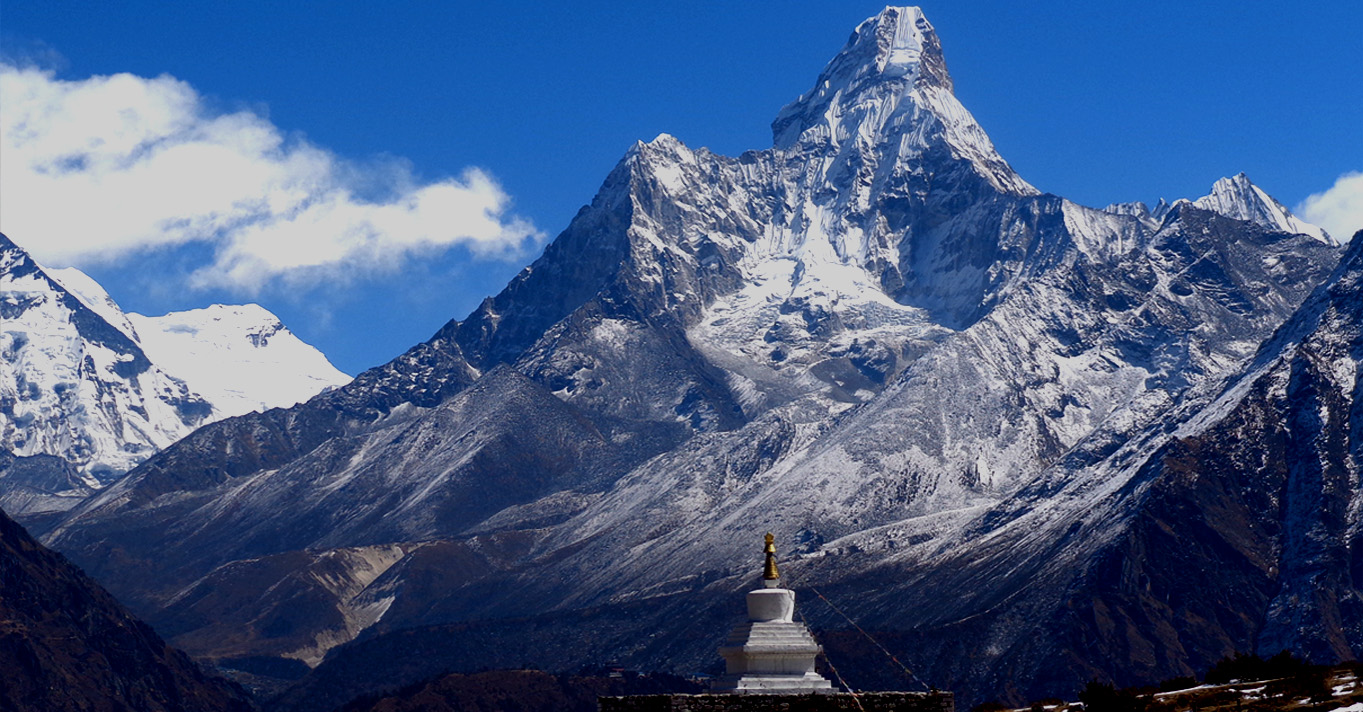
Rapid Everest Base Camp Trek (Heli flight back to lukla) Altitude and Distance Coverage
Day | Activity | Altitude (m/ft) | Distance (km/miles) | Duration (hours) | Elevation Gain (m/ft) |
1 | On arrival at Kathmandu airport , transfer to the hotel. | 1,350 m / 4,430 ft | - | 20-25 min drive | - |
2 | Fly to Lukla , 35 min flight, and trek to Phakding . | 2,860 m / 9,383 ft 2,610 m / 8,562 ft | 8 km / 5 miles | 3-4 hrs | -250 m / -820 ft |
3 | Trek from Phakding to Namche Bazaar . | 3,440 m / 11,286 ft | 10-12 km / 6-7.5 miles | 5-6 hrs | +830 m / +2,723 ft |
4 | Acclimatization day at Namche with a short hike to the Everest View Hotel or surrounding viewpoints. | 3,880 m / 12,730 ft | 3-4 km / 2-2.5 miles | 3-4 hrs (optional) | +440 m / +1,444 ft |
5 | Trek from Namche to Tengboche . | 3,860 m / 12,665 ft | 9 km / 5.6 miles | 5 hrs | +427 m / +1,401 ft |
6 | Trek from Tengboche to Dingboche . | 4,410 m / 14,470 ft | 11-12 km / 7.5 miles | 5 hrs | +543 m / +1,781 ft |
7 | Rest day at Dingboche with an optional hike to Nangkartshang . | 5,083 m / 16,677 ft | 3-5 km / 2-3 miles | 3-4 hrs | +673 m / +2,208 ft |
8 | Trek from Dingboche to Lobuche (. | 4,910 m / 16,109 ft | 11 km / 7 miles | 4-5 hrs | +500 m / +1,640 ft |
9 | Trek from Lobuche to Gorakshep , then to Everest Base Camp . | 5,180 m / 16,995 ft 5,364 m / 17,598 ft | 15 km / 9.3 miles | 6-7 hrs total | +454 m / +1,489 ft |
10 | Climb Kala Patthar , descend to Gorakshep for breakfast, then take a heli flight to Lukla. | 5,545 m / 18,193 ft | 3 km / 1.8 miles (hike) | 2-3 hrs (hike) | +365 m / +1,197 ft |
11 | Fly from Lukla to Kathmandu , afternoon free at leisure. | 2,860 m / 9,383 ft | - | 35 min flight | -1,510 m / -4,954 ft |
12 | Final international departure from Nepal. | 1,350 m / 4,430 ft | - | - | - |
Where Does Rapid Everest Base Camp Trek Begin and End?
The Everest Base Camp, Short Rapid Trek, begins from Kathmandu. A scenic flight takes you to the small Himalayan town of Lukla. Once you are here, you will start your trek to the village of Phakding.
Leaving Phakding behind, take the trail that reaches the Sherpa-inhibited village of the famous Namche Bazaar. This is an incredible village of Khumbu filled with excellent mountain views, culture, and historical wonders. You will acclimatize here for a day, take a rest, and explore if you feel like it.
The next day, the walk takes you ahead on a scenic trail to reach beautiful Tengboche, surrounded by green vegetation and snow-capped mountains, including Mt. Everest. As you walk, you will come across tall tree lines and an array of peaks with views of Mt. Everest and the magnificent Ama Dablam. Here, you will visit the all-important Tengboche Monastery, one of the biggest and most famous Buddhist monasteries in the Khumbu area.
Moving on from Tengboche Monastery will take you towards exciting tree lines, pure wilderness, and windy landscapes. Dingboche is the next destination. Due to its high altitude, the climate of Dingboche is always cool. The trail that you take is blessed with splendid views of the mountains in the backdrop, always giving you a feeling of having the mountain extremely close to you.
Further, as you go, you will reach Lobuche and then Gorakshep. The day you hike from Lobuche to Gorek Shep, you hike to Everest Base Camp (5364m) in the afternoon, the main target place on this journey. The next day, an early morning final climb from Gorak Shep will then reach you to the all-important Kala Patthar, known for its fantastic views of mountains.
Once you are on the top, you will be fascinated by the close views of the massive Khumbu Icefall and glaciers. Standing tall at 5,545 m and facing the breathtaking panorama of peaks with Mt. Everest and Mt. Pumori at a mere distance is a rewarding encounter.
After spending quality time around the scenic places of high Khumbu, you descend back to Gorakshep. From here, you board a Helicopter for a flight to reach back at Lukla, ending your high-flying adventure into the Everest Base Camp. From Lukla, you board a domestic flight that takes you to Kathmandu. It is a fantastic trekking journey with valuable moments, which will undoubtedly make this Short Everest Base Camp Trek with a helicopter return memorable.
Best season for a rapid Everest Trek with Heli Return to Lukla.
Generally, the months from March to May and September to November are the best times for this trek. Especially in March to May, wildflowers bloom in plenty, making it a very refreshing environment for trekking. Also, the morning stays clear with bright sunshine until the afternoon, and a bit overcast conditions tend to occur only late in the afternoons.
The months of October to early December are the second best time to be here for trekking, as the mountain views are clearer. However, the temperatures drop to minus degrees Celsius in the morning and night. Also, there is every chance of snowfall in some high areas en route to Everest Base Camp. Despite this, the temperatures during the daytime are still comfortable and are a good time for trekking on Everest.

Accommodation option in Rapid Everest Base Camp Trek
Accommodation is one of the most important amenities required for a trekker. A good night's sleep will allow for rejuvenation and allow the trekker to prepare physically and mentally for the trip on the following day. In Kathmandu, trekkers will stay at 4-star standard hotels with top-notch facilities. These four-star hotels are selected to provide a sense of comfort and luxury before heading out on the mountain adventure or after returning from the mountains.
However, many accommodation options are available in the mountains, so it might be challenging to choose from. The accommodation ranges from basic teahouses to comfort lodges to adjust to the budget and needs of every individual. Some of the accommodation options available in the Rapid Everest Base Camp Trek are as follows:
Teahouses: Teahouses are the basic accommodation options available in the Rapid Everest Base Camp trek. They provide basic amenities for the trekkers and are the cheapest options for accommodation. Teahouses are available throughout the settlements, and they provide bed and blanket facilities. However, the teahouses only have a shared bathroom option. Likewise, trekkers can also get meals, including breakfast, lunch, and dinner.
Guesthouses: Guesthouses are only available in some of the popular settlements of the Khumbu region, including Namche, Tengboche, and Dingboche. They are a more comfortable option than teahouses. However, they are a little expensive. Similarly, guesthouses have attached bathroom facilities with hot water and other essential amenities. On the other hand, staying in guesthouses allows one to interact with the locals, which provides an opportunity to understand more about the lifestyle of the Sherpa people.
Comfort Lodges: Trekking Planner Nepal suggests comfort lodges as the primary accommodation option. They provide all the essential amenities required for a comfortable overnight stay. Likewise, comfort lodges are upscale accommodation options that provide the highest degree of relaxation, including various amenities like Wi-Fi, hot showers, electricity, attached bathrooms, electric blankets, and many others.
Camping: Camping is another accommodation option in the rapid Everest Base Camp trek. However, camping requires more meticulous planning, so if anyone is interested in camping, they should plan ahead. It is one of the adventurous and rewarding accommodation options, but it can be difficult to establish camp during extreme climatic conditions. So, it is suitable for experienced trekkers and helps them connect with nature.
What kind of food do trekkers get to eat during Everest Base Camp Trek?
During trekking in the Everest Base Camp area, you can choose various foods from the lodge/tea house menu. These include soups, steaks, sandwiches, Momo, macaroni dishes, and pizzas. The tea houses where you stay provide a food menu, and you can pick your choice and give the order to your guide. It is advisable to include light foods during lunchtime, as they make you feel lighter and more accessible while you walk.
For high altitudes, we always recommend garlic soup, a natural means of preventing altitude sickness, along with the Nepalese staple diet of Dal Bhat. Over the years, it has been one of the nourishing, light, and healthily trekking foods and continues to be.
Physical fitness level, medical, and health are required for trekking to Everest with helicopter return.
The Everest trail is not a strenuous trek. Trekkers will regularly hike for 4 to 6 hours on average. Trekkers and travelers with an average level of fitness can easily complete this trek. Previous trekking experience or regular exercise will be an added advantage, but it is not compulsory.
However, this trek is not recommended for individuals who are suffering from chronic ailments or have heart or lung diseases. If you suffer from health conditions, it is better to make the trip short by increasing the number of days required to reach Everest base camp by making the camps short.

What are the permits required for Rapid Everest Base Camp trekking?
The Everest Base Camp lies in the Khumbu region of Nepal. The campsite is labeled as a protected area by the government of Nepal. So, to enter the protected region, various permits are required. The Everest Base Camp trek permit can be obtained from Trekking Planner Nepal for individuals or groups. Similarly, the licenses of Everest Base Camp are compulsory documents thoroughly checked along the Rapid Everest Base Camp route by the officials. If these documents are missed, entry inside the area is restricted. The following is the list of documents and permits that are essential for the Everest Base Camp trek, along with the cost of permits required to purchase these documents.
Khumbu Rural Municipality Permit
The Khumbu Rural Municipality Permit replaces the Trekkers Information Management System (TIMS) Card, which the Khumbu Municipality authorizes. The cost to obtain the Khumbu Rural Municipality Permit is as follow:
For foreigners, including SAARC countries (for the first four weeks) | NRP 2,000 per person |
Later than Four weeks | NRP 2,500 per person |
People can obtain the permit at the check post counter in Monjo or Lukla (Khumbu Pasang Rural Municipality Office). In Kathmandu, there are no substitute offices available to obtain the permit. However, Trekking Planner Nepal's representative may assist with obtaining this permit for the trek to ensure a smooth process.
Sagarmatha National Park Entry Permit
The Everest Base Camp comes under the Sagarmatha National Park, a protected region labeled by the Government of Nepal. So, to enter the national park, a Sagarmatha National Park Entry Permit is required at a specific cost. The entry fee for Sagarmatha National Park entry is given below:
For Foreigners: NPR 3,000 per person |
For SAARC nationals: NPR 1,500 per person |
For Nepalese: NPR 100 per person |
Trekkers can obtain the permit from Kathmandu at the Nepal Tourism Board Office. Similarly, the Sagarmatha National Park Entry Permit can also be purchased from Monjo's Sagarmatha National Park Entry Gate. During the peak trekking season in Nepal, there can be difficulty in obtaining a permit as one has to wait in line for the process. So, after submitting the required paperwork, a Trekking Planner Nepal agent can assist them in obtaining the permit in Kathmandu. This will make it possible for them to easily buy the entry permit, giving individuals a hassle-free experience.
Outline Itinerary for Rapid Everest Base Camp Trek with Helicopter Return
Day 1: On arrival at Kathmandu airport, the staff will transfer you to the hotel at 1,320 m /4,355 ft.
Day 2: Fly from Kathmandu to Lukla 2,820 m/9,300 ft, walk to Phakding village 2,645 m / 8,725 ft - 04 hrs. trek.
Day 3: Trek to Namche Bazaar 3,440 m / 11, 350 ft - 06 hrs.
Day 4: Acclimatization day at Namche and a short scenic hike to the viewpoint.
Day 5: Trek to Tengboche 3,867 m / 12,760 ft-05 hrs.
Day 6: Trek to Dingboche 4,340 m / 14,320 ft - 05 hrs.
Day 7: At Dingboche, another rest day for acclimatization with a short hike.
Day 8: Trek to Lobuche (4910m/16109ft) 4-5 hrs walk,
Day 9: Trek to Gorakshep (5180m/16995ft), 3-4 hrs walk, and Everest Base Camp (5364m/17600ft), 2-3 hrs walk
Day 10: Climb Kalapathar 5,545 m / 18,297 ft and descend to Gorakshep for breakfast, then a short Heli flight to Lukla
Day 11: Fly from Lukla to Kathmandu, with the afternoon free at leisure.
Day 12: International departure for homeward bound.


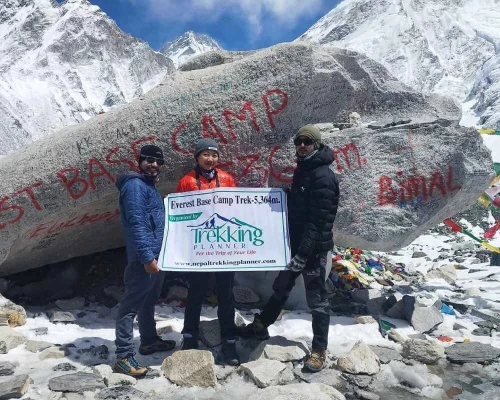
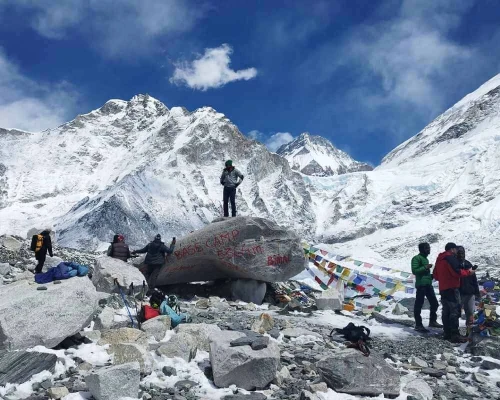
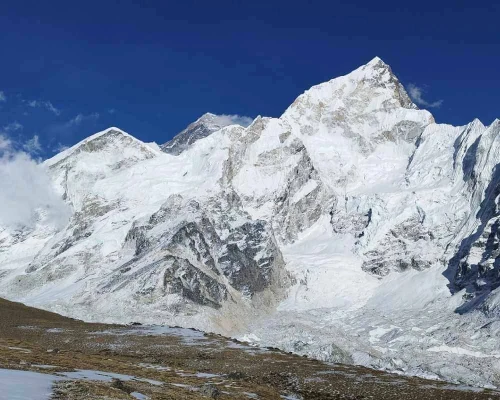
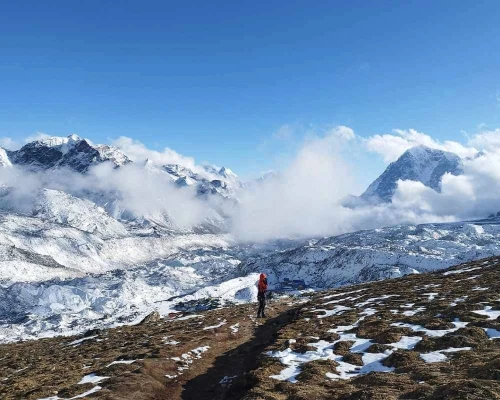
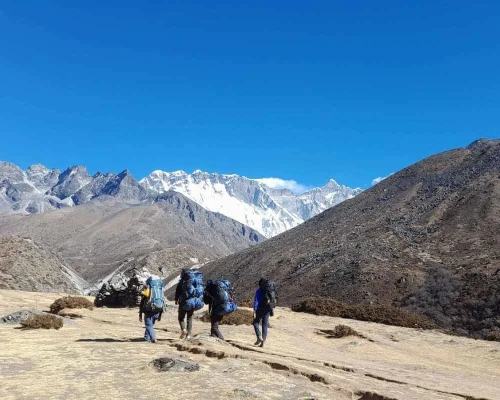
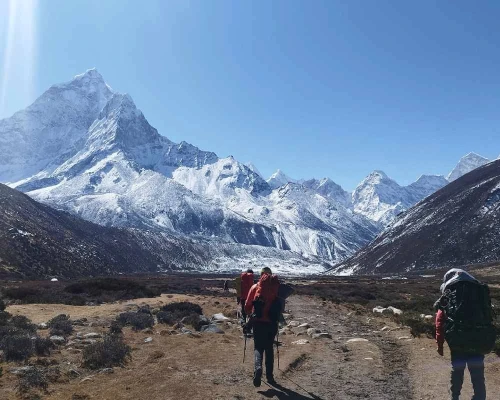
.webp)
 General
General Upper Body
Upper Body Lower Body
Lower Body Other Essentials
Other Essentials



